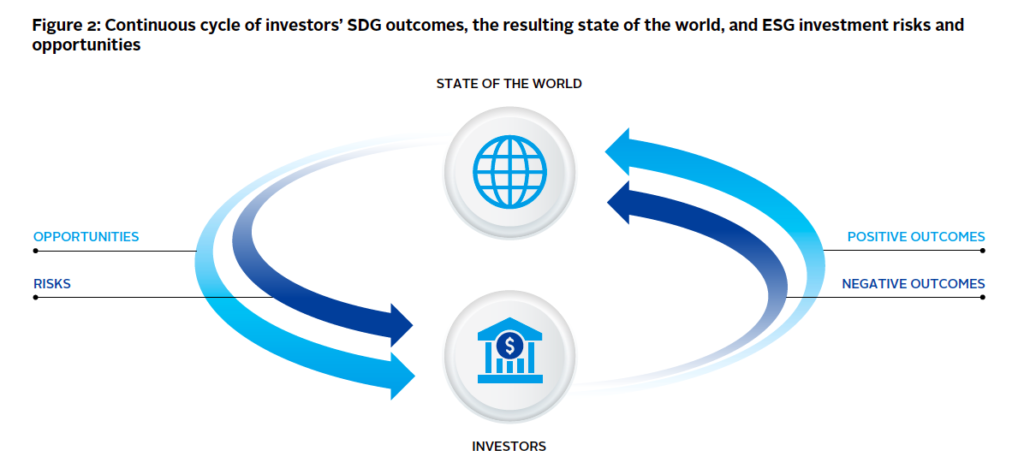The Principles for Responsible Investment (PRI) has released a Sustainable Development Goals (SDG) framework, as it said the pandemic has increased expectations on investors to deliver on the goals
In the wake of the crisis, visibility and urgency on issues such as climate change, income inequality and human rights have risen and the five-step framework seeks to support investors in creating investment outcomes that are aligned with the UN goals, the PRI said in its report.
It comes as the investor organisation, with $89trn (€78trn) in assets managed by its signatories, has registered an increase in its members mentioning the SDGs in their reporting, with 650 in 2020, compared to 418 last year.
The United Nations Conference on Trade and Development (UNCTAD) estimates that meeting the 17 SDGs by 2030 will require $5trn to $7trn per year from the private sector, the PRI report said.
To support the SDGs, investors need to increase the positive outcomes and decrease the negative outcomes of their actions.
Investors need to redirect existing capital and engage with investees to improve positive outcomes.
The PRI report states that there is a continuous feedback cycle between ESG risks and opportunities and (SDG-aligned) outcomes, shaped by investor actions (see figure 2 below).

This applies particularly for ‘universal owners’, who are long-term investors and so large that they hold a slice of the overall market.
“For such investors, overall economic performance will influence the future value of their portfolios more than the performance of individual companies or sectors, incentivising them to support sustainable growth and well-functioning financial markets,” the report noted.
Focusing on SDG outcomes allows investors to, for example:
- identify opportunities, such as through changes to business models, across supply chains and through new and expanded products and services;
- prepare for and respond to legal and regulatory developments, including those that may lead to asset stranding; and
- protect their reputation and licence-to-operate (eg the trust of beneficiaries, clients and other stakeholders), particularly in the event of negative outcomes from investments.
The framework follows previous work by the PRI on the SDG investment case in 2017 and is the starting point for more work on the subject. It will also be the basis for future guidance and support, the report explained.
Next steps
Going forward, the PRI will work with signatories, who seek to shape outcomes in line with the SDGs, to provide best practices and develop a consensus on how to address common challenges, it said.
The PRI will also include an initial set of questions on shaping real-world outcomes in the pilot year of its new reporting framework in 2021.
See also: – PRI issues five recommendations for EU covid-19 recovery plan
Junko Nakagawa, president and chief executive of Nomura Asset Management, commented: “It is clear that large asset managers have a crucial role to play in supporting outcomes in line with the SDGs through both investments in equities and engagement with publicly-listed companies.
“Whilst we recognise the difficulties associated with pursuing impact through public investing for certain SDG targets, large public companies are among the most important stakeholders for achieving success. These companies have the resources, scale and investment power to bridge the huge funding gaps, while major asset managers are uniquely positioned to engage with these companies and help to enhance their impact.”
Darryl Murphy, managing director, infrastructure at Aviva Investors, said: “As long-term investors, we believe infrastructure – and real assets more broadly – have a critical role to play in moving towards a truly sustainable future.
“[The SDGs] help us to define objectives for a project and shape terms and conditions of an investment agreement, ensuring that borrowers adhere to certain practices and standards over the long-term.”
SDG framework
The five steps of the PRI’s framework are:
- Identify outcomes: Part 1 is about investors identifying and understanding the unintended outcomes of their investments and their operations. This assessment involves identifying positive and negative real-world outcomes related to operations, products and services of investee companies.
- Set policies and targets: Part 2 sees investors setting policies and targets, moving the investor from identifying and understanding unintended outcomes towards taking intentional steps to shape outcomes.
- Investors shape outcomes: In Part 3, investors seek to shape outcomes in line with the policies and targets set in Part 2, and report on progress against those objectives.
- The financial system shapes collective outcomes: Part 4 considers the contribution of the financial system by looking at aggregated actions of individual investors, and their collective actions.
- Global stakeholders collaborate to achieve outcomes in line with the SDGs: Part 5 recognises that no one set of actors will achieve the SDGs in isolation; including, for example, programmes to connect supply and demand of investments at scale.
This article first appeared on Expert Investor, a sister title of ESG Clarity.








